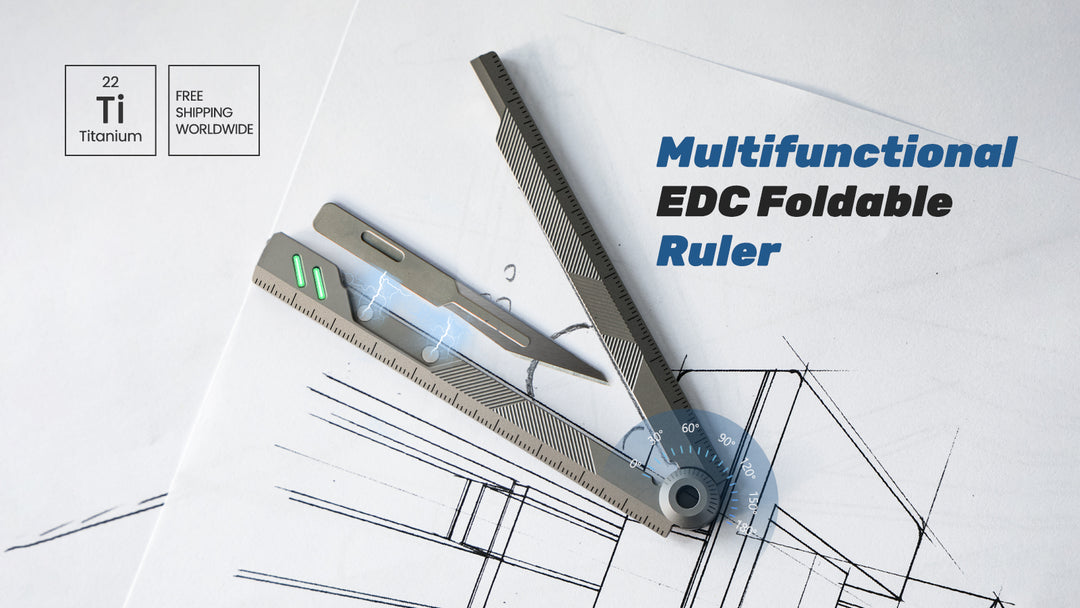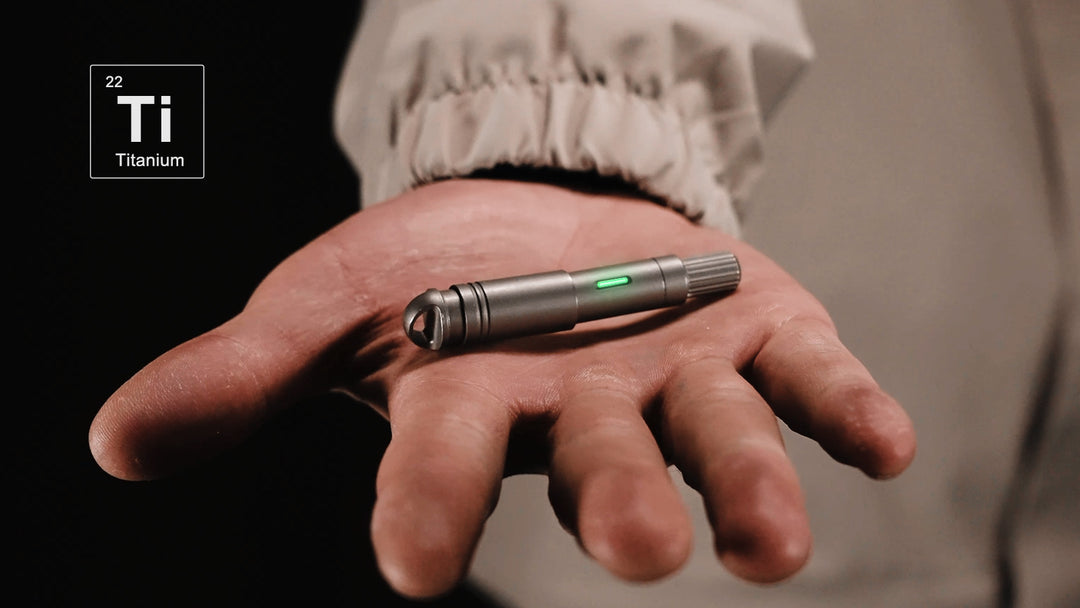Practical Tips to Extend the Lifespan of Your EDC Tools

EDC (Everyday Carry) tools are indispensable companions in our daily lives. Whether it's a multitool, folding knife, flashlight, or other small carry items, they all require proper care to stay in top condition. Good maintenance not only extends the lifespan of your tools but also ensures their reliability in critical moments.
Today, let's discuss some maintenance and care tips for EDC tools to keep your gear like new and always ready to use!
1. Cleaning: Remove Dirt and Corrosion
EDC tools inevitably accumulate dust, sweat, oil, and other residues during use, which can lead to rust or mechanical failure if left unchecked.
Cleaning Methods:
-
Metal Tools (Knives, Pliers, Wrenches, etc.):
-
Wipe the surface with a soft cloth or toothbrush dipped in alcohol or specialized cleaner.
-
For stubborn stains, use WD-40 to lubricate and remove rust, then wipe it clean with a dry cloth.
-
-
Flashlights/Electronic Devices:
-
Use a cotton swab to clean the battery compartment and contact points to avoid oxidation that affects conductivity.
-
Avoid washing with water; use compressed air to blow out dust.
-
-
Leather Products (Knife Sheaths, Wallets, etc.):
-
Regularly rub them with leather conditioner to prevent cracking.
-
⚠️ Note: Avoid soaking or using strong acids and bases as cleaners, as they may damage the coating or internal structure.
2. Lubrication: Keep Operations Smooth
Parts like joints, bearings, and locks in EDC tools require regular lubrication. Without it, they may become stiff or even seize up.
Lubrication Recommendations:
-
Folding Knives/Multitools: Apply specialized knife lubricant (such as Nano-Oil, Tuf-Glide) to the pivot points and open/close several times to distribute evenly.
-
Flashlight Threads/Waterproof O-rings: Apply a small amount of silicone grease to ensure smooth operation and waterproof sealing.
-
Avoid using cooking oils or regular machine oil as they tend to attract dust and degrade over time.
🔧 Lubrication Frequency: Once every 1-3 months. For tools used frequently, you may need to lubricate them more often.
3. Rust Prevention: The Biggest Enemy of Metal Tools
Humidity, sweat, and skin oils can accelerate rust, especially on high-carbon steel blades.
Rust Prevention Measures:
-
Storage: Keep tools dry; store them in a dehumidifying box or wrap them in rust-proof paper.
-
Post-Use: Wipe off fingerprints and moisture immediately, then apply a thin layer of rust prevention oil (such as Ballistol).
-
Stainless Steel Tools: Although more rust-resistant, they still benefit from regular maintenance.
💡 Tip: Knife enthusiasts commonly use the "knife oil + microfiber cloth" method to prevent oxidation effectively.
4. Inspection and Maintenance: Preventive Care
Regularly inspecting your tools helps identify potential issues early, preventing sudden failures during use.
Key Inspection Areas:
-
Blade: Check for chips or rolled edges. Does it need sharpening?
-
Screws/Locks: Are they loose? Tighten them with a precision screwdriver.
-
Springs/Bearings: Are they not snapping back correctly? Lubricate or replace if necessary.
-
Battery Devices: Check battery levels and avoid leakage that can cause corrosion.
🛠️ Recommendation: Perform a comprehensive inspection every 1-2 months to ensure your tools are in optimal condition.
5. Proper Storage: Avoid Unnecessary Wear and Tear
Improper storage can lead to deformation, rust, or damage to your tools.
Storage Tips:
-
Avoid Humid Environments: Such as bathrooms or cars (high humidity and temperature).
-
Store Separately: Avoid contact between knives and other tools to prevent scratching. Use a dedicated carrying case or magnetic strips to secure them.
-
When Not in Use for Long Periods: After applying oil, store the tools in a sealed bag with a desiccant.
6. Usage Habits: Key to Reducing Wear and Tear
Proper usage habits are just as important as maintenance for extending the lifespan of your tools.
Good Habits to Develop:
-
Avoid Overloading: For example, don't use a small folding knife as a pry bar, as this can cause the blade to chip or the locking mechanism to break.
-
Avoid Exposure to Corrosive Substances: Such as seawater or acidic liquids.
-
Regularly Replace Wearable Parts: Such as the O-rings in flashlights or the springs in multitools.
Summary: EDC Tool Maintenance Checklist
✅ Regular Cleaning (Remove dirt, sweat, and stains)
✅ Proper Lubrication (Pivot points, threads, and locks)
✅ Rust Prevention (Oil coating and dry storage)
✅ Inspection and Maintenance (Screws, blades, batteries)
✅ Proper Storage (Keep dry and protected)
✅ Good Usage Habits (No abuse, avoid corrosive materials)
🔹 Remember: Your EDC tools are your reliable companions for everyday tasks. Take good care of them, and they will never let you down in crucial moments!






